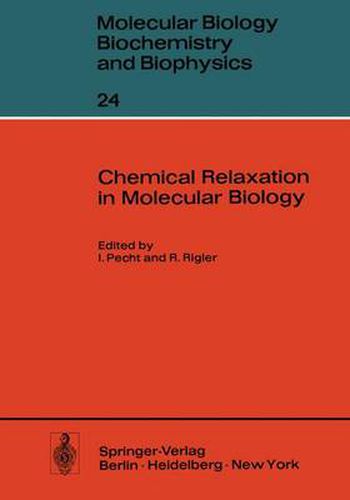Readings Newsletter
Become a Readings Member to make your shopping experience even easier.
Sign in or sign up for free!
You’re not far away from qualifying for FREE standard shipping within Australia
You’ve qualified for FREE standard shipping within Australia
The cart is loading…






This title is printed to order. This book may have been self-published. If so, we cannot guarantee the quality of the content. In the main most books will have gone through the editing process however some may not. We therefore suggest that you be aware of this before ordering this book. If in doubt check either the author or publisher’s details as we are unable to accept any returns unless they are faulty. Please contact us if you have any questions.
The development of an area of scientific research is a dynamic process with its own kinetic equations and its own physical mech anism. The study of fast chemical interactions and transformations is such an area, and while it is tempting to draw analogies or to speculate about the simplest model system, the lack of ade quately averaged observables is an annoying obstacle to such an undertaking. Sciences suffering from such conditions usually avoid quantitative models, be they primitive or complex. Instead, they prove their point by case histories . Chemical relaxation kinetics started as an offspring of research in acoustics. In some aqueous ionic solutions anomalous acoustic absorption had been observed. A systematic study traced the cause of this absorption, showing that the covered frequency range and the intensity of the absorption were related in a predictable manner to the rate at which ions can interact and form structures differing in volume from the non interacting species. The step from this experimental observation and its correct, non trivial explanation to the discovery that all fast chemical pro cesses must reveal themselves quantitatively in the relaxation rate of a perturbed equilibrium state, and that perturbation para meters other than sound waves can be used for its exploitation, was made by MANFRED EIGEN in 1954. The foresightedness of K.F.
$9.00 standard shipping within Australia
FREE standard shipping within Australia for orders over $100.00
Express & International shipping calculated at checkout
This title is printed to order. This book may have been self-published. If so, we cannot guarantee the quality of the content. In the main most books will have gone through the editing process however some may not. We therefore suggest that you be aware of this before ordering this book. If in doubt check either the author or publisher’s details as we are unable to accept any returns unless they are faulty. Please contact us if you have any questions.
The development of an area of scientific research is a dynamic process with its own kinetic equations and its own physical mech anism. The study of fast chemical interactions and transformations is such an area, and while it is tempting to draw analogies or to speculate about the simplest model system, the lack of ade quately averaged observables is an annoying obstacle to such an undertaking. Sciences suffering from such conditions usually avoid quantitative models, be they primitive or complex. Instead, they prove their point by case histories . Chemical relaxation kinetics started as an offspring of research in acoustics. In some aqueous ionic solutions anomalous acoustic absorption had been observed. A systematic study traced the cause of this absorption, showing that the covered frequency range and the intensity of the absorption were related in a predictable manner to the rate at which ions can interact and form structures differing in volume from the non interacting species. The step from this experimental observation and its correct, non trivial explanation to the discovery that all fast chemical pro cesses must reveal themselves quantitatively in the relaxation rate of a perturbed equilibrium state, and that perturbation para meters other than sound waves can be used for its exploitation, was made by MANFRED EIGEN in 1954. The foresightedness of K.F.